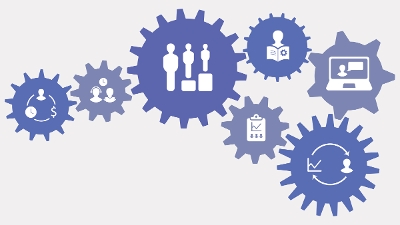POLICY INDICATORS
What
What is this resource about? Ensuring the accessibility of materials and technologies for all learners starts with a high-quality procurement system. The CAST AEM Center’s Quality Indicators describe the essential elements of such a system, including compliance, guidelines, professional development, data procedures, and resources.
The CAST National Center on Accessible Educational Materials (AEM Center) is a federally-funded technical assistance center that works to increase both the availability and use of high-quality accessible materials and technologies in order to support improved learning opportunities and outcomes for all learners.
Why
Why is this important for higher education? The purpose of the Quality Indicators and their Critical Components for Higher Education is to assist institutions of higher education in the development of dynamic, coordinated systems for the timely provision of accessible educational materials (AEM) and accessible technologies. The use of accessible educational materials and technologies strengthens opportunities for all learners to experience independence, participation and progress.
UDL Connection
Provide multiple means of engagement: When students do not face barriers to accessing materials their engagement increases.
Provide multiple means of action and expression: Accessible educational materials can work in harmony with the accessibility features available on many devices to provide opportunities for all learners to demonstrate their understanding.
Provide multiple means of representation: Accessible educational materials provide opportunities for all learners to acquire information in a timely and equally effective manner.
Background Information
Implementing and sustaining a coordinated system of AEM-related services aligned to the Quality Indicators requires time and effort. The result, however, is expected to provide a high return on investment since accessible materials and technologies are assets to all learners. Accessibility improves product responsivity to all users’ needs and preferences by providing multiple options for access and engagement. Accessibility features promote choices for how learners see, hear, comprehend, and interact with materials and technologies, thereby interconnecting with instructional methods designed to address learner variability.

The AEM Center’s Quality Indicators for the Provision of AEM can be used by decision makers in higher education institutions to develop new procurement systems or to self-evaluate existing systems that may be absent best practices for accessibility.
For example, at a state university system level, decision makers may use the Quality Indicators to update and improve policies for procuring accessible materials and technologies for system-wide use.
Critical Components reduce each Quality Indicator into definitive parts for reaching its conditions.
A preface offers additional information, including the background, development, use, and principles behind the Quality Indicators.
Learn More
Follow the links to learn more about each quality indicator on the AEM Center website:
- Quality Indicator 1: A coordinated system for provision of accessible materials and technologies
- Quality Indicator 2: Acquisition and provision in a timely manner
- Quality Indicator 3: Written guidelines
- Quality Indicator 4: Comprehensive learning opportunities and technical assistance
- Quality Indicator 5: A systematic data collection process
- Quality Indicator 6: Use of data to guide changes
- Quality Indicator 7: Allocation of resources
